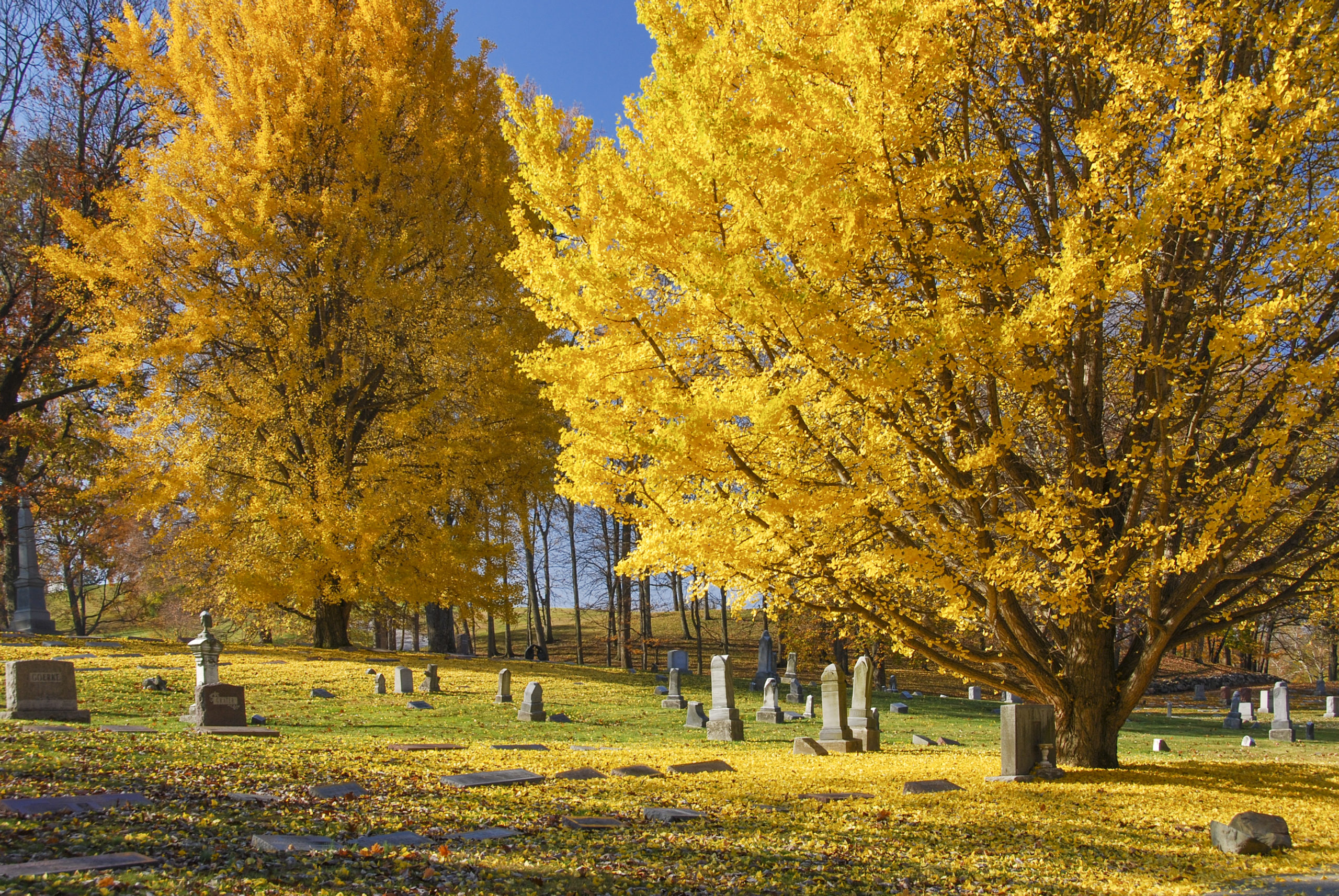Ginko Trees at Crown Hill
One of our most interesting trees in the fall is the Ginkgo (Ginkgo biloba), a deciduous tree that’s native to China but well-established in our American landscapes. The oldest known living Ginkgo is estimated to be 3,500 years old! The species itself is 200 million years old — likely the oldest in existence. It’s thought to have evolved around the same time as dinosaurs. A commonly cultivated tree around the world, it thrives in parks, gardens and Crown Hill. We have many beautiful specimens.
Ginkgos have beautiful, fan-shaped leaves that turn bright yellow in the fall. The female tree produces a pungent smelling fruit while male trees don’t produce fruit. It’s a low maintenance, slow growing tree that needs at least 6 hours a day of direct sunlight, and it prefers moist but well-drained soil. The mature height for a Ginkgo is 50 to 80 feet tall with a variable width. It has a high tolerance for urban conditions but is found to be endangered in its native range in China due to over-harvesting. The Ginkgo is widely used in traditional medicine to treat a variety of aliments including dementia, anxiety, schizophrenia and blood clotting.
One of the most unique features of this beloved tree is its ability to drop almost all of its leaves in a single day, resulting in a lovely shower of golden leaves. How does this happen? The leaf stems of deciduous trees are known as petioles. Before leaves drop in the fall, the petioles produce a protective layer of cells to protect the trees. Deciduous trees like maples, oaks, etc., create this protective layer over several weeks as the amount of daylight and temperatures decrease, but the Ginkgo leaves form this protective layer simultaneously and wait for a hard frost to trigger all the leaves to drop at the same time. If a hard frost happens before the leaves turn yellow, their green leaves will fall.
Among the many amazing specimens, there are three Ginkgo trees we’d like to highlight at Crown Hill — two trees on the north end of Sec. 7, one along the road and the other behind it up on the hill. The third tree is nearby on the south side of Section 14, across the street from the Eli Lilly private family mausoleum. All are pictured here. The Ginkgo up on the hill on Section 7 is also featured in the video of falling leaves, taken last year on November 1.
We encourage you to visit often this fall, see our beautiful foliage and keep a close eye on our Ginkgos! Maybe you can guess the exact date their leaves will fall this year!



